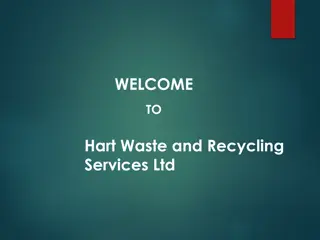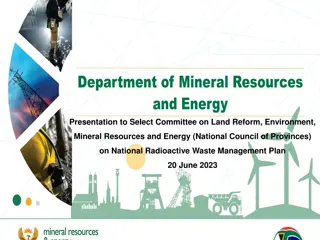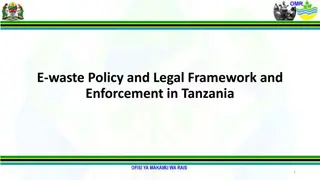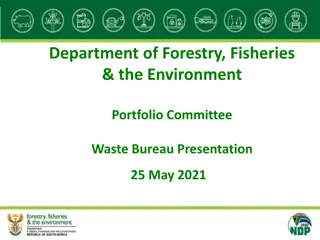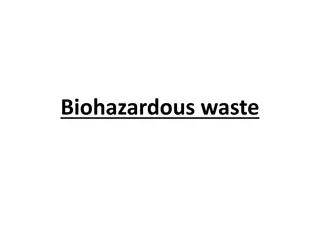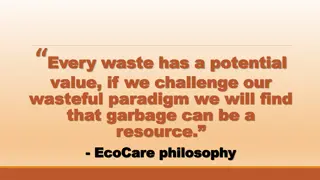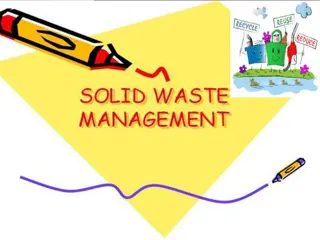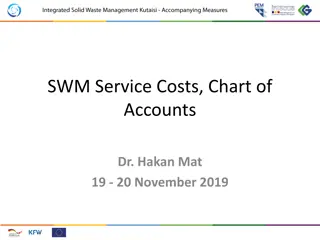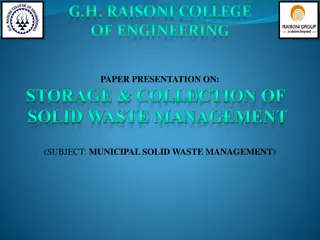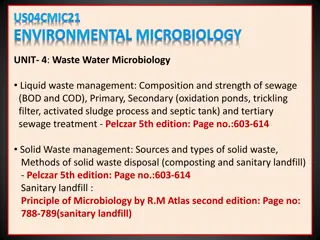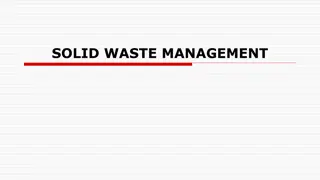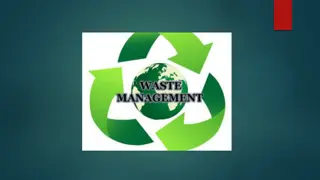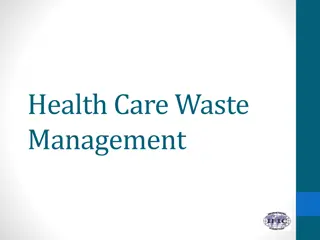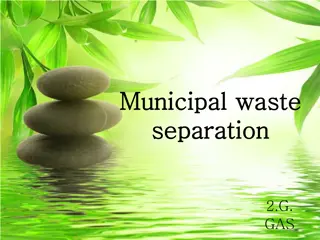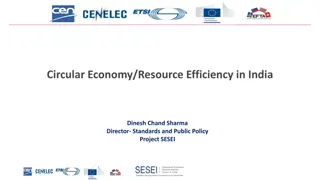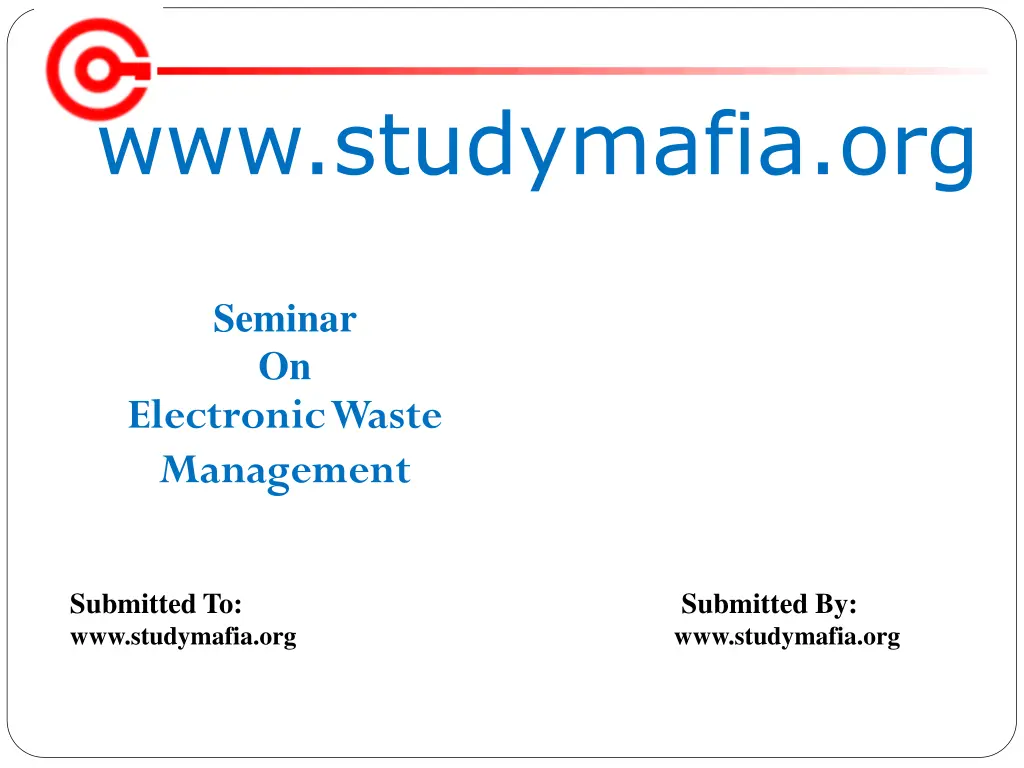
Effective Electronic Waste Management Strategies
"Learn about the challenges and guidelines of managing electronic waste, including common e-waste items and the importance of proper disposal. Understand the impact of IT sector growth on e-waste generation and how to plan and implement successful e-waste programs."
Download Presentation

Please find below an Image/Link to download the presentation.
The content on the website is provided AS IS for your information and personal use only. It may not be sold, licensed, or shared on other websites without obtaining consent from the author. If you encounter any issues during the download, it is possible that the publisher has removed the file from their server.
You are allowed to download the files provided on this website for personal or commercial use, subject to the condition that they are used lawfully. All files are the property of their respective owners.
The content on the website is provided AS IS for your information and personal use only. It may not be sold, licensed, or shared on other websites without obtaining consent from the author.
E N D
Presentation Transcript
www.studymafia.org Seminar On Electronic Waste Management Submitted To: www.studymafia.org Submitted By: www.studymafia.org
Content INTRODUCTION WHAT IS E-WASTE? Common E-waste Items MANAGEMENT OF E-WASTE E-WASTE GUIDELINES: SALIENT FEATURES SPECIAL E-WASTE CHALLENGES PLANNING AN E-WASTE PROGRAM CONCLUSION REFERENCES
INTRODUCTION Growth in the IT and communication sectors has enhanced the usage of the electronic equipment exponentially. Faster upgradation of electronic product is forcing consumers to discard old electronic products very quickly, which, in turn, adds to e-waste to the solid waste stream. The growing problem of e-waste calls for greater emphasis on recycling e-waste and better e-waste management.
WHAT IS E-WASTE ? E-waste is any electrical or electronic equipment that s been discarded. This includes working and broken items that are thrown in the garbage or donated to a charity reseller like Goodwill. Often, if the item goes unsold in the store, it will be thrown away. E-waste is particularly dangerous due to toxic chemicals that naturally leach from the metals inside when buried.
List of Common E List of Common E- -waste Items waste Items Home Appliances Communications and Information Technology Devices Home Entertainment Devices Electronic Utilities Office and Medical Equipment
Home Home Appliances Appliances Microwaves Home Entertainment Devices Electric cookers Heaters Fans
Communications and Information Communications and Information Technology Technology Devices Devices Cell phones Smartphones Desktop Computers Computer Monitors Laptops Circuit boards Hard Drives
Home Entertainment Devices Home Entertainment Devices DVDs Blu Ray Players Stereos Televisions Video Game Systems Fax machines Copiers Printers
Electronic Electronic Utilities Utilities Massage Chairs Heating Pads Remote Controls Television Remotes Electrical Cords Lamps Smart Lights Night Lights Treadmills FitBits
Office and Medical Office and Medical Equipment Equipment Copiers/Printers IT Server Racks IT Servers Cords and Cables WiFi Dongles Dialysis Machines Imaging Equipment Phone & PBX systems Audio & Video Equipment
Is e-Waste Hazardous? E-waste is not hazardous waste per-se. However, the hazardous constituents present in the e-waste render it hazardous when such wastes are dismantled and processed, since it is only at this stage that they pose hazard to health and environment.
MANAGEMENT OF E-WASTE It is estimated that 75% of electronic items are stored due to uncertainty of how to manage it. These electronic junks lie unattended in houses, offices, warehouses etc. and normally mixed with household wastes, which are finally disposed off at landfills. inventory management, production-process modification, volume reduction, recovery and reuse.
e-Waste guidelines: Salient features The guidelines notified in April 2008 - basic guidance document identifying and recognizing fundamental principles: Producer Responsibility RoHS (Restriction on Hazardous Substances) Best practices Insight into technologies for various levels of recycling The guidelines explicitly mention the need for a separate legislation for implementing Producer Responsibility
SPECIAL E-WASTE CHALLENGES High Volume of e-Waste (the highest growing stream of urban solid waste generation), Limits or restrictions to dump e-waste with Municipal Solid Waste in Landfills, Growing number of Product Types, Heavy, Bulky and complex Waste to process, Requires special logistics and new handling facilities, with new e-waste processing Technology
PLANNING AN E-WASTE PROGRAM Determine what is best for your community or clients/consumers Develop a Public or Private + Public or BtoB Program Define program Goals Evaluate Existing Logistics and/ or Infrastructure
CONCLUSION E-waste management is a great challenge for governments of many developing countries such as India. This is becoming a huge public health issue and is exponentially increasing by the day. In order to separately collect, effectively treat, and dispose of e- waste, as well as divert it from conventional landfills and open burning, it is essential to integrate the informal sector with the formal sector. The competent authorities in developing and transition countries need to establish mechanisms for handling and treatment of e- waste in a safe and sustainable manner.
References www.google.com www.wikipedia.com www.studymafia.org

